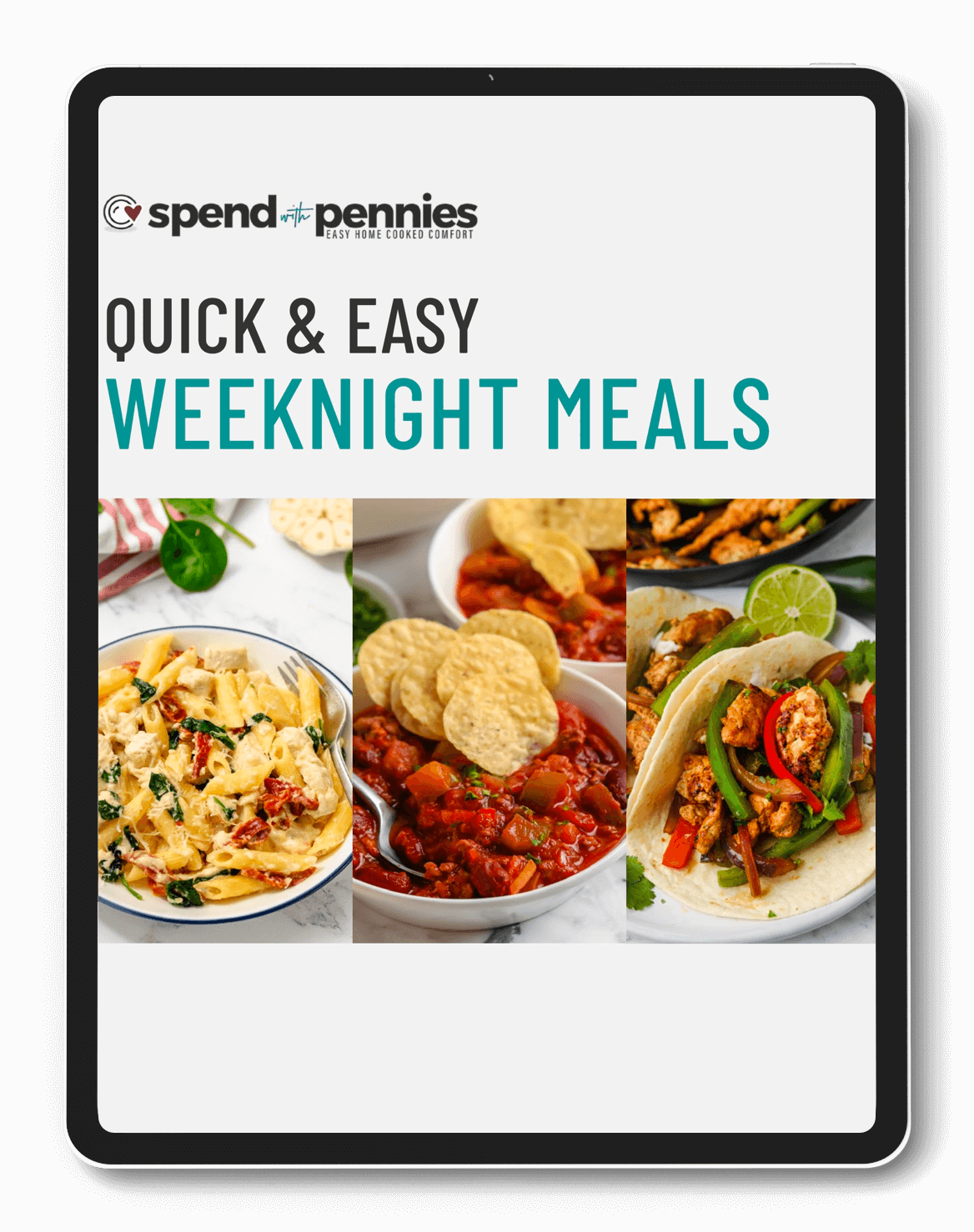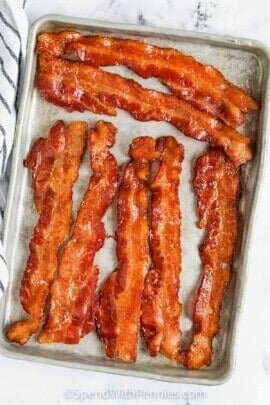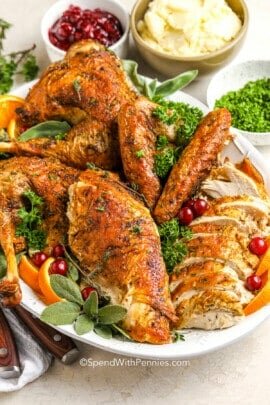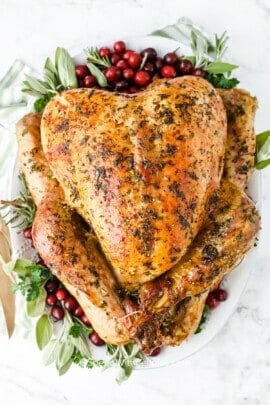Measuring flour is one of the most important parts of any recipe, and especially so when baking. Have you ever had that moment where you need flour for a recipe, reach into the bag, and realize how compactable it is? Flour is the basis for a ton of recipes, but it needs to be properly measured.
Because of the starches in flour, it can quickly turn any dish if you add too much or too little. Here’s everything you need to know about measuring flour perfectly for a recipe!
How To Measure Flour
Flour is one of the main components to almost every recipe out there. Since the beginning of time, people have used flour to create thick sauces, baked goods, and even to dredge meat before cooking it!
Flour is light and powdery substance that can easily be packed down. This can create drastically different measurements depending on how it is measured, which can be detrimental to the turn out of many recipes.
They say that cooking is an art, and baking is a science. If the measurements of ingredients in baked goods are even slightly off, it could ruin the whole recipe. Flour is no exception to this, it can cause a dish to have a different color, texture, or taste!
For example: Looking at the images below (in grams to give a more precise example), BOTH measuring cups look like a 1 cup measure but as you can see, one of them actually has 36% MORE flour than the other. Adding 36% more flour will certainly ruin a cookie recipe!
So, what IS the right way to measure flour? Well, the most accurate way to measure flour is definitely by weight. A kitchen scale will help you to get the most accurate measurement possible because different types of flour have different densities (I use this scale from Amazon, it’s about $11).
If you don’t have access to a kitchen scale, it is still possible to get a pretty accurate measurement with a set of dry measures. Just be sure you are not packing down the flour when it is added to the measuring cups!
Steps to Properly Measure Flour
Using Dry Measures:
- If the recipe called for sifted flour, sift flour directly into an unused mixing bowl. It is okay to sift more than you need, because you can just add it back to the bag afterwards.
- To add to a measuring cup, use a spoon or scoop to add the sifted flour to the dry measuring cup. Be very careful to not pack the flour down too much.
- Using the back of a butter knife, level the flour by scraping off any excess flour back into the bowl. Add measured flour to the recipe.
Do not scoop the flour directly into the measuring cup. This can add up to 30% more flour as it packs it into the cup.
Tip: If I am measuring flour for a recipe that calls for quite a few cups of flour, I like to keep a tally with a pen next to me so I don’t lose count of how much I have added!
Using a Scale:
Prep scale: place an empty mixing bowl on the scale before turning it on. This way it will be at 0 and only give you the weight of the flour.
- Sift flour into the mixing bowl. Keep sifting until you have the amount of flour the recipe calls for (read below for a flour weight conversion chart).
- If you sift more than you need into bowl, use a spoon to scoop the excess flour out of bowl.
- Add measured flour to the recipe slowly. Adding it slowly will prevent it from re-clumping and packing as it is added.
All Purpose Flour Weight Conversion Chart
All purpose flour is the most commonly used type of flour. It is a white flour that has been refined, and can be used in almost all recipes that call for flour.
- 1 cup flour – 4.75 oz
- ¾ cup flour – 3.19 oz
- ½ cup flour – 2.13 oz
- ⅓ cup flour – 1.40 oz
- ¼ cup flour – 1.06 oz
Cake Flour Weight Conversion Chart
Cake flour is lighter than all purpose flour. It is used to create lighter cakes such as angel food cake, and white cake. It is bleached and refined further than all purpose flour, so it weighs slightly less.
- 1 cup flour – 4.0 oz
- ¾ cup flour – 3.0 oz
- ½ cup flour – 2.0 oz
- ⅓ cup flour – 1.32 oz
- ¼ cup flour – 1.0 oz
Whole Wheat Flour Weight Conversion Chart
Whole wheat flour uses all 3 parts of the grain: the bran, the germ, and the endosperm. This creates more space in between the granules that fill with air, so it ends up weighing less than all purpose and cake flours.
- 1 cup flour – 4.50 oz
- ¾ cup flour – 3.38 oz
- ½ cup flour – 2.25 oz
- ⅓ cup flour – 1.49 oz
- ¼ cup flour – 1.14 oz
How to Properly Sift Flour
Sifting flour is the first step to correctly measuring flour. It is the process of shaking flour through a wire sifter to loosen it, and breaking up any clumps that it might have. Sifting flour before you use it helps to ensure that the flour will fold into the batter easier, and it will create a lighter more airy end result to baked goods.
To sift flour, pour it into a sifter (I use a strainer in a pinch!) and shake flour through it. It should come out a lot lighter, and more uniform. If you are measuring flour, it is easy to sift it directly into a bowl placed on a kitchen scale. Otherwise, just scoop the sifted flour into dry measuring cups to carefully to avoid packing it down.
If you are in a rush or do not have the tools necessary to sift flour, it may change the recipe slightly but it is not usually detrimental to the turnout of baked goods. I would suggest using a spoon or whisk to fluff up the flour before you measure it though, to break up any lumps or packed down spots in flour.



















All Purpose Flour Weight Conversion Chart should be 4.23 oz to give 120 g. Not 4.75 oz, which is equal to 134.7 g. As a retiree I have lots of time to look at cooking sites. Yours is one of my two favourites. Yes, that’s favourites with a Canadian “u” in it.
Great post as always. Question. I add to my measuring cup with a spoon but I will tap a little with my finger while holding it. Then I go across with my knife to level. I don’t have a scale ( I will get one). Is my tapping lightly a no no? Sometimes it looks like my spooning left gaps so I thought tapping would help. Can I measure my floor first, then sift if recipe calls for sifting? I need to read your sifting part again. Thanks for your help. You are my absolute favorite site and I look forward to my daily email!
If the recipes calls for sifted flour, we recommend sifting the flour first then measuring. Lightly tapping shouldn’t be a problem, you just don’t want to pack it down too much or it will affect the amount of flour in your recipe.
Thanks for responding. I really appreciate it.
There is no excuse for any home cook not to own a digital scale. Good quality ones can be easily had for $15 if not less. Personally, I have two, one which goes up to 15 lbs and another more precise scale that goes to 500 grams but measures down to 1/100th of a gram. If you want to have easily reproducible, consistent, results, a scale is an absolute must.
A scale is a must-have in my kitchen too, Robert!
The problem with flour is (as you’ve shown) it’s all over the board! Every manufacturer lists the weight of 1 cup as 120 grams. Yet most recipes, when adjusted, usually call for a higher amount. Since baking is a formula, it’s infuriating to find the most important ingredient so inconsistent.
I made the Cinnamon bread yesterday and was totally delighted with the result. My husband told me I could have one slice and the rest of the loaf was his . The texture was light and moist and the bread looked very tempting to eat. I will definitely make this again. What a treat! I also much appreciated the tip on flour measuring. The measuring cups I use are the glass ones, so it is not possible to scrape the excess flour as suggested. The weight conversion gave me a great alternative. Thanks for this recipe and the tip. I loved it.
So glad this recipe turned out delicious for you Louise! At least you got to enjoy one slice